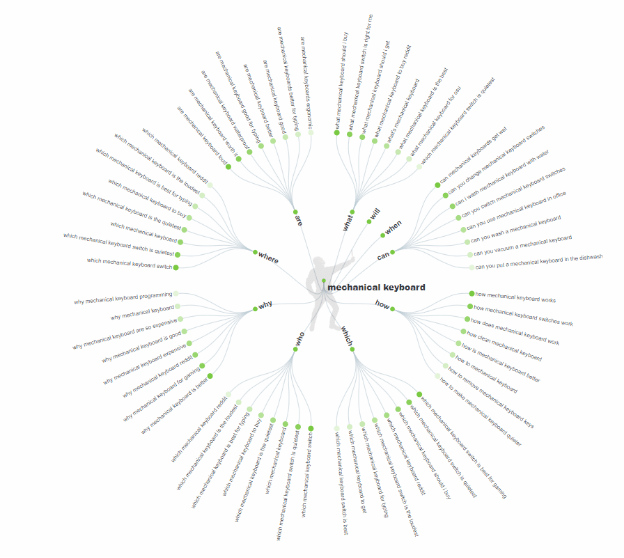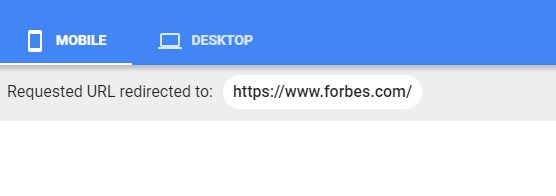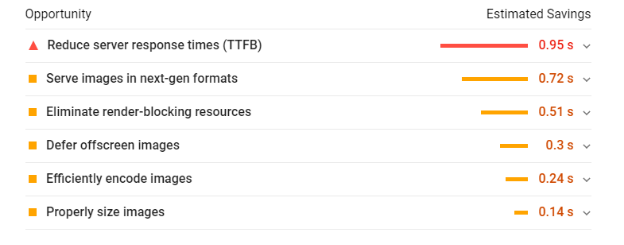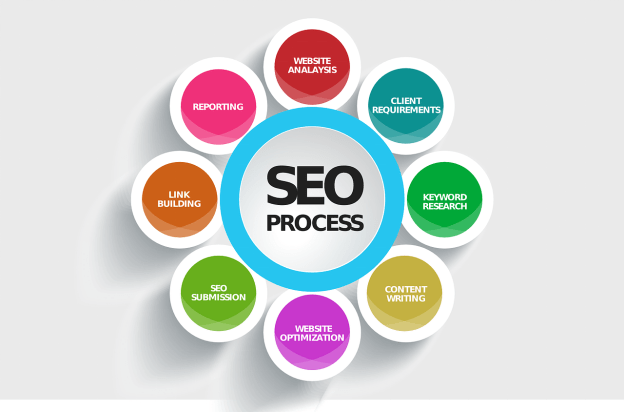Whether you’re a small business or a Fortune 500 giant, you won’t get very far without optimizing your online assets for Google and other search engines. And Google, like other forward-thinking businesses, keeps making tweaks to their platform (read: algorithms) to improve the overall user experience.
This means that strategies that once worked wonders for your bottom line before are now being outdated and replaced. So what has changed in 2020? This round up of the latest SEO trends will get you up to speed.
1. Domain Authority Revamped – EAT
Domain authority used to be defined by links. The more links you had, the greater your domain authority. Not anymore. Brute forcing your way with spammy backlink tools is now the surefire way of getting blacklisted by Google. So put your blackhat backlink techniques on hold… indefinitely! Today, Google and other search engines evaluate your website based on EAT.
EAT is Google’s preferred way of checking for expertise and domain authority. It’s an acronym for Expertise, Authoritativeness, and Trustworthiness. This can be done by creating engaging content on your website to enhance user experience.
Bonus points if you’re able to leverage the opinion of expert people on your website. This is doubly true for websites that contain medical content. They should, for all intents and purposes, be written by health care professionals.
In fact, Google could be using their new form of Google Authorship to determine the original content writer behind a piece of content, and whether or not this person is an expert in the field. This is a tough thing to fake. Your only option? Either become an expert or hire one!
2. Voice Search Will Play a Big Role
Voice search was released in 2012 and many people assumed (wrongly) that it would end up on the ever-growing list of the Google Graveyard. Fast forward 8 years and we have a completely different beast to deal with. In fact, over 20% of search queries on Google’s mobile app are voice searches!
The use of voice search has been amplified with the growing use of smartphones. Instead of typing their queries on search engines as is traditionally done, people now speak into their smartphones. Google (and other search engines) are fairly good at picking up the most commonly spoken words and doesn’t have a hard time processing the end-user’s voice.
As you would expect, voice search is fundamentally different than regular searches. So instead of typing, for instance, “best mechanical keyboard”, users would speak “which mechanical keyboard switch is best for gaming”. And if you want your content strategy to bear fruits, voice search is the way to go. There are many online tools, paid and free, that let you actively hunt for voice queries based on volume. If you’re just starting out, check out AnswerthePublic.com.
AnswerthePublic neatly arranges all of the most valuable search queries based on user intent. The search queries branch out of categories such as “which”, “who”, “when”, “what”, and “are”.
Here’s what it looks like. Very neat.

3. Website Should Load Under 3 Seconds
Your hosting provider will now play a huge role in the success of your SEO efforts. This is because Google now factors in website loading speed before determining your overall rank. If your website takes longer than 3 seconds to load, every additional second, will result in significantly higher ‘bounce rates’. This indicates that people are hitting the ‘back’ button right after landing on your website to go back to the search results page. Google is smart and picks up this behavior. Too many such behaviors and your website will be pushed into oblivion.
Today’s search engines prioritize user experience more than anything. If your website doesn’t cater to user experience, it won’t stand a chance.
You can check your website speed using various free tools. Our preferred method is to use PageSpeed Insights. This free tool analyzes your website’s loading speed and neatly identifies all the factors that you can improve. Simply load it up and type in your website’s URL. You will be shown your website’s performance on mobile devices first. To check performance on desktop devices, you’ll have to manually select “desktop”. Use the picture below for reference:

Make sure to check this area to see which areas are most responsible for the website loading speed.

In this case, the website’s loading speed can be improved by about 0.95 seconds by switching or upgrading the hosting provider.
Here are a few quick adjustments you can do to reduce site load times and improve your search engine ranking:
Enable browser caching: With browser caching, you can make it possible for repeat users to experience faster load times by storing crucial elements of your website in a temporary storage (also known as a cache).
Get rid of inactive plugins: Every plugin you add, whether it is anti-malware software or an analytical too, you are compromising the loading speed of your website. Make sure to get rid of the plugins you don’t need. Don’t just switch them off, get rid of them because they are slowing down website speed.
Check page elements: You don’t want certain pages to slow down website loading speed
4. Advanced Link Building Opportunities
We started this blog by explaining the importance of domain authority and how Google’s EAT mantra ties into it. In step 4, we’ll go over the most easiest (and common) ways to get your website cited. They are all organic and proven to work with search engines (especially Google).
Guest posting – this is a great way to boost your website’s performance because many news sites are willing to publish your story for free. Some websites will allow you to place one or two links back to your website for backlinking opportunities. Check out more tips and tricks here.
Use a tool like SEMrush to find the backlinks that your competitors have. Note down websites with a decent domain authority (usually above 20) and hit them up over email (or even a phone call) to let them know you’re reaching out for a potential guest blogging opportunity.
Visit Conferences – You don’t have to give out TED talks, no. Just popping up in conferences and seminars is a great way to show off your brand and gain some much needed recognition. If you haven’t done a lot of speaking, simply apply to them and eventually, many will accept you.
Gain Awards and Recognition – This bit can be a little difficult to accomplish. But there are various platforms that let you get recognition. One such tool is Clutch. They’re like an online repository of businesses and rank them based on their performance. Getting listed here (and elsewhere) should do wonders for your reputation. Even if you get recognized under the “top 500 websites for SEO” list, you’re golden. This tiny bit of recognition gives you the momentum you need to one-up over your competitors.
Get Cited in Business Directories – Remember those big and bulky phone book directories? This step works exactly like that. There are many online directories that list businesses belonging to a particular niche to make online shopping easier. Below are some of the most valuable ones:
- Yelp
- TrustPilot
- Better Business Bureau
- InfoUSA
- com
- com
- And similar directories
The key is to get all areas of your business properly cited. Make sure all citations include the following properties of your business:
- Business description
- Business address
- Active hours
- Payment forms you accept
- Online reviews
- Google Map
- And similar properties
The more citations you get, the more authoritative you will appear to search engines like Google and Bing.
5. Optimize for Featured Snippets

Zero click searches can make or break your SEO strategy. This is when your blog appears at the top of search engine results pages in a neat little box. In fact, over 50% of Google searches now end without a click. This is because users are able to find the answers to their queries without clicking on organic and paid results. Make sure the featured snippet belongs to you and not your competitors.
While this sounds like an oxymoron, it is anything but. When people read enough featured snippets coming from your website, they will start trusting you over your competitors. This way, when they eventually do plan on buying a product or service, they know exactly who to call.
Optimizing your website for zero-click searches is relatively simple. The easiest way to do this is with FAQ pages. An FAQ page, also known as the ‘frequently asked questions’ page, will list out answers to the most commonly asked questions in a neat format for users to understand.
Similarly, when you are writing a long-form blog post (usually 3000 words or more), make sure to include a nice little summary that contains the TL;DR version of the blog somewhere in the first or second paragraph. This will (hopefully) be used as a featured snippet.
Also, we’ve noticed that top tens lists are extremely effective at being featured on the top results. Something like, “5 reasons why blue mechanical switches are good for gaming”. Make sure to use H2 headings because Google also loves those.
6. Optimize for Local SEO
Speaking of zero search results, try optimizing your website for local SEO. This is important because a vast number of searches now feature keywords such as “near me” or “XXXX services in Location Y”. If you cater to an audience in a specific location, make sure to fine tune your website so that it loads for users in that location.
For example, if you’re catering to users in Los Angeles and selling mechanical keyboards, your web page should contain the following keywords in it Meta tags: “best mechanical keyboard in Los Angeles”, or something very similar to this effect.
7. Do You Have Social Media Pages?
Your social media game should be on-point. Google will take into account your presence on Facebook, Twitter, and Instagram to determine your domain authority. Make sure to target all social media channels if possible. This includes LinkedIn, Pinterest, YouTube (yes it is a social media platform), and even SlideShare.
Try to regularly post updates about products, services, and share tips with your audience to keep them engaged. If you don’t have the time to do all this yourself, hire an agency to do this for you.
8. Video Marketing
Video marketing is proving to be extremely valuable to businesses because it is significantly improving their bottom line. Here’s why: most people don’t have the time to go through a lengthy blog post. They would rather see 10 second video and then make up their mind.
Netflix is doing this all the time with their 10 second ads on YouTube. Those 10 results can do all the heavy lifting for you when it comes to lead generation.
Beyond advertisements, make sure you publish regular videos on YouTube about your product and service. Give reviews, troubleshoot problems, discuss the latest trends – just speak up. Google picks up on this and rewards you buy improving your search engine ranking.
9. SSL Security
Google prioritizes online security above everything else. In fact, if you were to visit a non-HTTPS website over Chrome, Google will issue a warning that the website is not secure. HTTPS encrypts all the information between the website and user, preventing outsiders from looking in. SSL security is easy to find and you won’t have to spend an arm and a leg to buy one for your website.
Depending on your hosting provider, you could get SSL for free with Lets Encrypt. Furthermore, you can also buy SSL security for less than $10. It is worth noting that you get what you pay for. When your business starts generating enough revenue, it may be worth upgrading to a more premium SSL like Extended Validation certificates. They can improve conversion rates and look more professional.
So there you have it, an updated guide to SEO in 2020. If you feel we missed something important, do let us know in the comments below!
